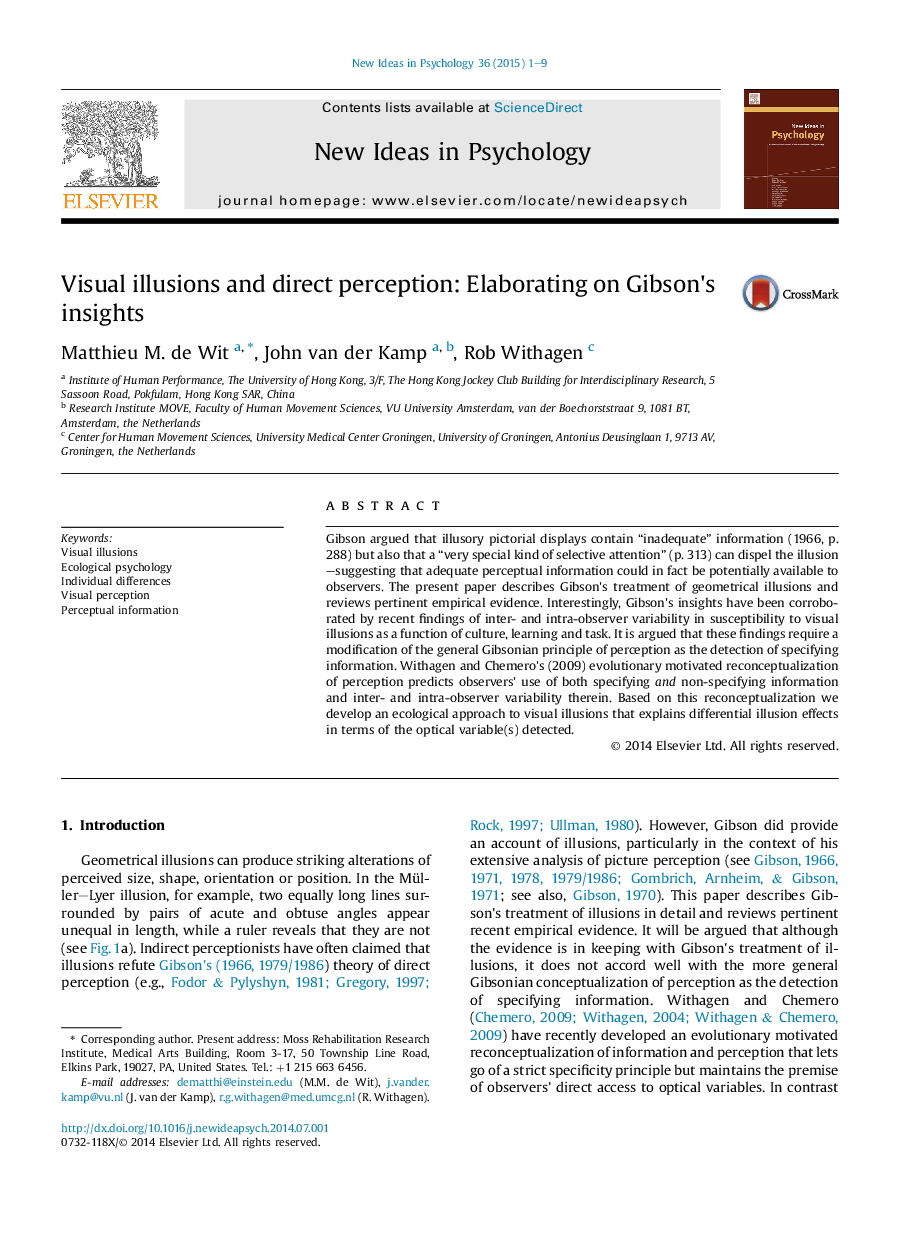| Article ID | Journal | Published Year | Pages | File Type |
|---|---|---|---|---|
| 331633 | New Ideas in Psychology | 2015 | 9 Pages |
Gibson argued that illusory pictorial displays contain “inadequate” information (1966, p. 288) but also that a “very special kind of selective attention” (p. 313) can dispel the illusion–suggesting that adequate perceptual information could in fact be potentially available to observers. The present paper describes Gibson's treatment of geometrical illusions and reviews pertinent empirical evidence. Interestingly, Gibson's insights have been corroborated by recent findings of inter- and intra-observer variability in susceptibility to visual illusions as a function of culture, learning and task. It is argued that these findings require a modification of the general Gibsonian principle of perception as the detection of specifying information. Withagen and Chemero's (2009) evolutionary motivated reconceptualization of perception predicts observers' use of both specifying and non-specifying information and inter- and intra-observer variability therein. Based on this reconceptualization we develop an ecological approach to visual illusions that explains differential illusion effects in terms of the optical variable(s) detected.
